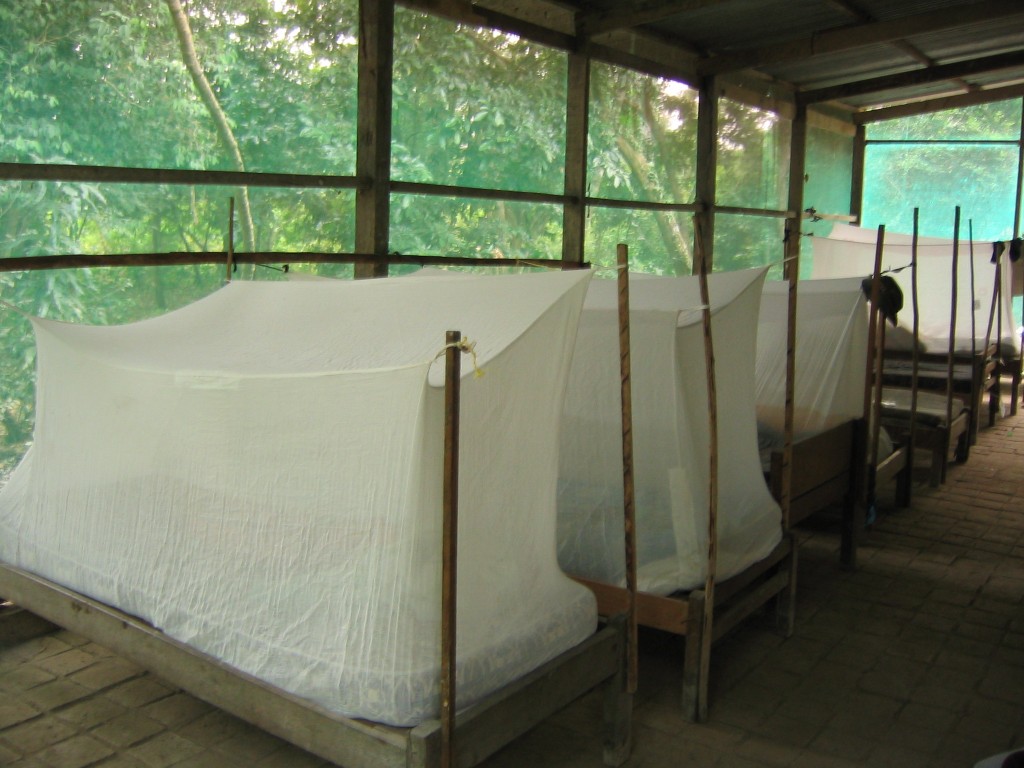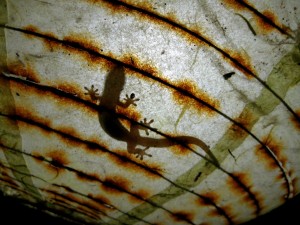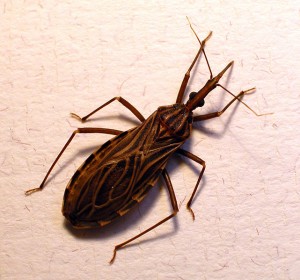Most towns in Nicaragua, even rural ones, conduct a yearly rabies-vaccination campaign for dogs, but you should still be careful. Get a rabies vaccination if you intend to spend a long time in Nicaragua. Should you be bitten, immediately cleanse the wound with lots of soap, and get prompt medical attention.
Mosquitoes (Nicas refer to them as zancudos) are most active during the rainy season (June–November) and in areas near stagnant water, like marshes, puddles, or rice fields. They are much more common in the lower, flatter regions of Nicaragua than they are in mountains, though even in the highlands and major urban areas, old tires, cans, and roadside puddles can provide the habitat necessary to produce swarms of them.

Mosquito nets are a must when mosquito activity is at its heaviest.
Photo by Phil Whitehouse licensed Creative Common Attribution.
The mosquito that carries malaria bites during the night and evening hours, and the dengue fever carrier is active during the day, from dawn to dusk. They are both relatively simple to combat, and ensuring you don’t get bitten is the best prophylaxis for preventing disease.
First and foremost, limit the amount of skin you expose: long sleeves, pants, and socks will do more to prevent bites than the strongest chemical repellent. Choose lodging accommodations with good screens and if this is not possible, use a fan to blow airborne insects away from your body as you sleep. Avoid being outside or unprotected in the hour before sunset, when mosquito activity is heaviest, and use a mosquitero (mosquito net) tucked underneath your mattress when you sleep.
Hanging-type mosquito nets are available in Nicaragua, or you can purchase tela de mosquitero anywhere they sell fabric and have a mosquito net made by a seamstress. Also, many pulperías sell espirales (mosquito coils), which burn slowly, releasing a mosquito-repelling smoke; they’re cheap and convenient, but full of chemicals, so don’t breathe in too much smoke.
Arachnophobes, beware! The spiders of Nicaragua are dark, hairy, and occasionally capable of devouring small birds. Of note is the pica-caballo, a kind of tarantula whose name (meaning horse-biter) refers to the alleged power of its flesh-rotting venom to destroy a horse’s hoof.
Don’t worry, though; spiders do not aggressively seek out people, and do way more good than harm by eating things like Chagas bugs. If you’d rather the spiders didn’t share your personal space, shake out your bedclothes before going to sleep and check your shoes before putting your feet in them.
Scorpions (alacránes) are common in Nicaragua, especially in dark corners, beaches, and piles of wood. Nicaraguan scorpions look nasty—black and big—but their sting is no more harmful than that of a bee and is described by some as what a cigarette burn feels like. Your lips and tongue may feel a little numb, but the venom is nothing compared to their smaller, translucent cousins in Mexico. For people who are prone to anaphylactic shock, it can be a more serious or life-threatening experience.

Not the escorpión you may have expected. Photo by Mat Honan, licensed Creative Commons Attribution.
Be aware, in Nicaragua the Spanish word escorpión usually refers not to scorpions but to the harmless little geckos (also called perros zompopos) that scurry around walls eating small insects. And in spite of what your campesino friends might insist, those little geckos are neither malevolent nor deadly and would never, as you will often hear, intentionally try to kill you by urinating on you.
There are 15 species of poisonous snakes in Nicaragua, but your chance of seeing one is extremely rare, unless you’re going deep into the bush. In that case, walk softly and carry a big machete. Keep an eye out for 1 of 11 pit viper species (family Viperidae), especially the infamous fer-de-lance (Bothrops asper), or Barba amarilla; the most aggressive and dangerous snake in Central America, the fer-de-lance is mostly confined to the humid central highlands and the Caribbean coast. Less common pit vipers, but occasionally seen in western parts of the country, are the Ponzigua (Porthidium ophryomegas); the Central American rattlesnake (Crotalus durissus), known in Spanish as cascabel; and a relative of the copperhead, the Cantil, or Castellana, (Agkistrodon bilineatus).
In addition, there are four rarely seen species of the Elapidae family (three coral snakes and the pelagic sea snake). Remember, there are many coral mimics out there with various versions of the famous colored markings; the true coral (only one species of which is found on the west side of the country) has ring markings in only this order: red, yellow, black, yellow.
The Chagas bug (Trypanosoma cruzi) is a large, recognizable insect, also called the kissing bug, assassin bug, and cone-nose. In Spanish it’s known as chinche, but this word is also used for many other types of beetlelike creatures. The Chagas bug bites its victim (usually on the face, close to the lips), sucks its fill of blood, and, for the coup de grâce, defecates on the newly created wound.

The notorious Chagas Bug. Public domain image by Dr. Erwin Huebner.
Chagas bugs are present in Nicaragua, found mostly in poor campesino structures of crumbling adobe. Besides the downright insult of being bitten, sucked, and pooped on, the Chagas bug’s biggest menace is the disease it carries of the same name, which manifests itself in 2 percent of its victims.
The first symptoms include swollen glands and a fever that appear 1–2 weeks after the bite. The disease then goes into a 5 to 30-year remission phase. If and when it reappears, Chagas’ disease causes the lining of the heart to swell, sometimes resulting in death. There is no cure.
Excerpted from the Fifth Edition of Moon Nicaragua.